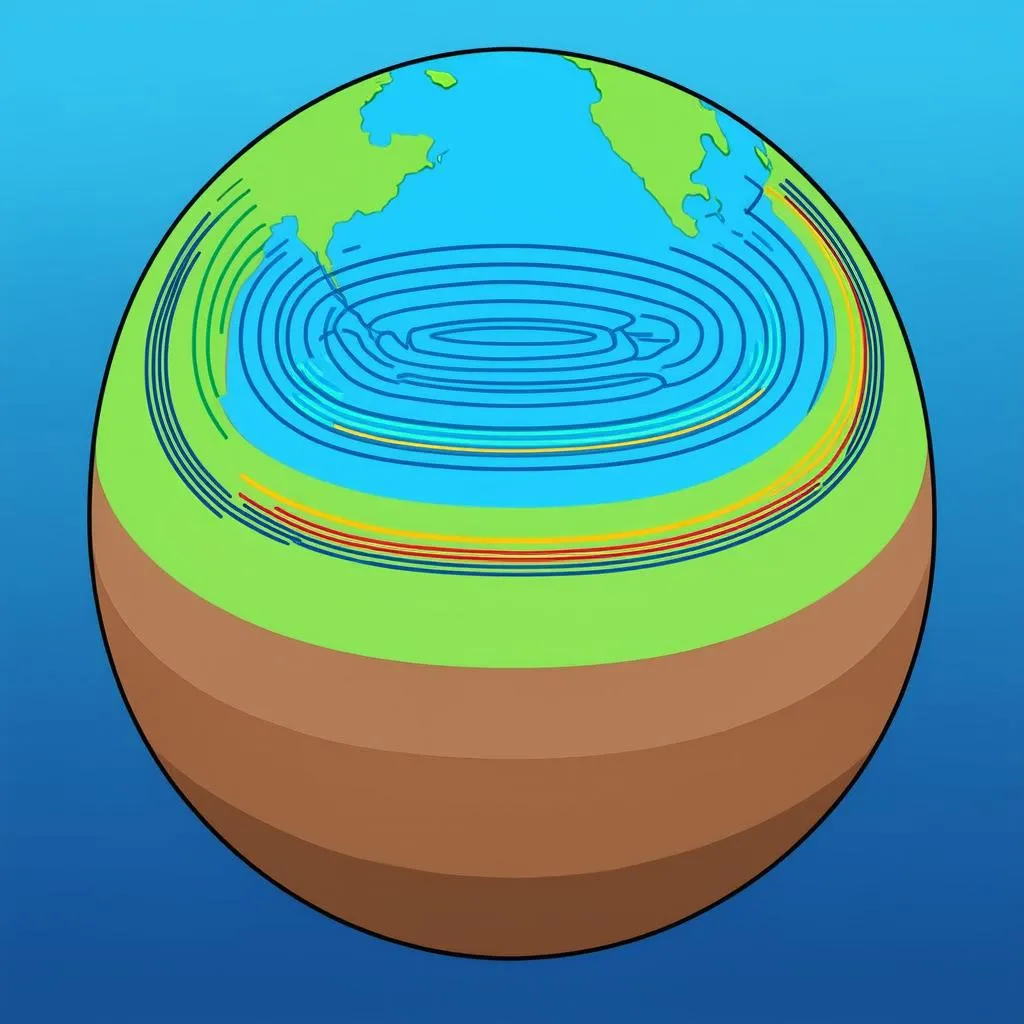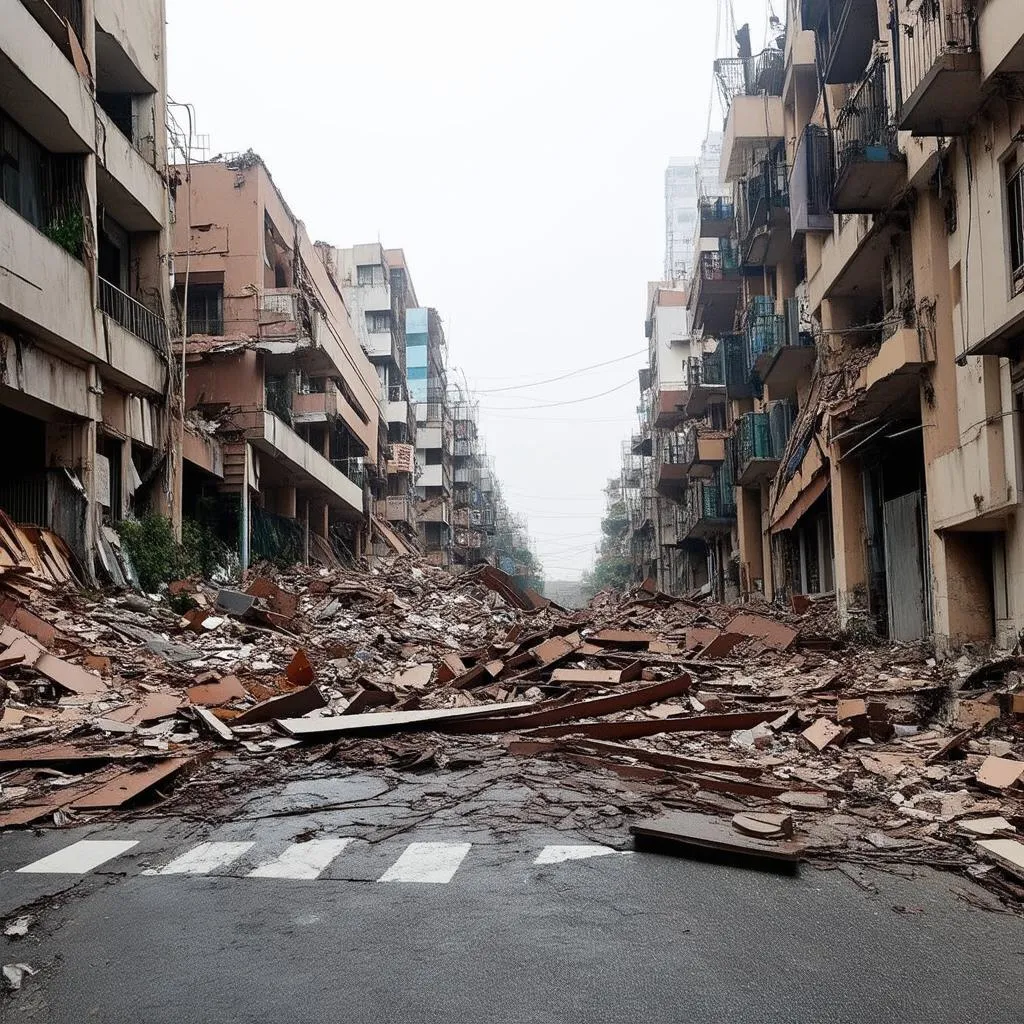Imagine standing on the bustling streets of Tokyo, surrounded by towering skyscrapers and vibrant energy. Suddenly, the ground beneath you begins to shake. Buildings sway, car alarms blare, and a sense of awe and uncertainty fills the air. This, my friends, is the power of seismic waves, the invisible force that ripples through the Earth during an earthquake. But have you ever wondered, “How Do Seismic Waves Travel?” Let’s delve into the fascinating world beneath our feet and uncover the secrets of these powerful waves.
Unraveling the Mystery: Types of Seismic Waves and Their Paths
Seismic waves are like messengers from the Earth’s interior, carrying energy released during earthquakes or explosions. They come in different types, each with its own unique way of traveling:
1. Body Waves: Navigating the Earth’s Depths
As the name suggests, body waves travel through the Earth’s interior. They are further classified into:
Primary Waves (P-waves): These are the fastest seismic waves, similar to sound waves, that compress and expand the ground as they move. Imagine stretching and releasing a slinky – that’s the motion of a P-wave. They can travel through solids, liquids, and gases, making them the first to arrive at seismic stations after an earthquake. To understand how P-waves travel through different mediums, you can read more about it here: (https://travelcar.edu.vn/a-p-waves-travel-through-solids-s-waves-do-not/).
Secondary Waves (S-waves): S-waves are slower than P-waves and move in a shearing motion, shaking the ground perpendicular to their direction of travel. Think of shaking a rope up and down – that’s an S-wave in action. Unlike P-waves, S-waves can only travel through solids, giving scientists valuable clues about the Earth’s internal structure. For a deeper dive into the movement of S-waves, check out this article: (https://travelcar.edu.vn/how-do-s-waves-travel/).
2. Surface Waves: Making the Earth’s Crust Shimmer
Surface waves, as you might guess, travel along the Earth’s surface, causing the most damage during earthquakes. There are two main types:
Love Waves: Named after British mathematician A.E.H. Love, these waves move the ground side-to-side in a horizontal motion, like a snake slithering through grass. They are particularly destructive to structures built on soft ground.
Rayleigh Waves: Discovered by Lord Rayleigh, these waves create a rolling motion, causing the ground to move both up and down and back and forth, much like ocean waves. They are responsible for the prolonged shaking felt during an earthquake.
Factors Influencing Seismic Wave Travel: A Journey of Variables
The journey of seismic waves through the Earth is not a straightforward one. Their speed and path are influenced by several factors:
Rock Density and Composition: Just like sound travels faster through water than air, seismic waves travel faster through denser rocks.
Temperature: Higher temperatures generally slow down seismic waves.
Pressure: Increased pressure, like that found deeper within the Earth, can speed up wave propagation.
These factors contribute to the complex paths seismic waves take, often bending and refracting as they encounter different layers within the Earth.
Seismic Waves: Unlocking Earth’s Secrets and Predicting Future Tremors
Seismic waves are not just destructive forces but also invaluable tools for scientists. By studying their patterns and arrival times at different seismic stations worldwide, scientists can:
- Determine the location and magnitude of earthquakes.
- Map the Earth’s internal structure, identifying layers like the crust, mantle, and core.
- Understand the forces that shape our planet.
Imagine standing at the foot of Mount Fuji, a symbol of Japan’s majestic landscape. Did you know that this iconic volcano owes its existence to the very same tectonic forces that generate earthquakes and seismic waves? It’s a reminder that our planet is a dynamic and ever-evolving system, and seismic waves offer us a glimpse into its inner workings.
FAQs: Your Burning Questions Answered
1. How fast do earthquake waves travel?
The speed of seismic waves varies depending on the type of wave and the material they’re traveling through. P-waves are the fastest, reaching speeds of up to 14 km/s in the Earth’s mantle. S-waves are slower, traveling at about half the speed of P-waves. For more details on earthquake wave speeds, check out this article: (https://travelcar.edu.vn/how-fast-do-earthquake-waves-travel/).
2. Can animals sense seismic waves before humans?
There’s anecdotal evidence suggesting that some animals may be able to sense P-waves before humans, potentially explaining unusual behavior before earthquakes. However, more research is needed to confirm this.
Travelcar.edu.vn: Your Gateway to Exploring the World
From understanding the science behind earthquakes to planning your next adventure to a seismically active region, Travelcar.edu.vn is your one-stop resource for all things travel and geography. Check out our website for more fascinating articles and travel tips!
 Seismic Waves Earth
Seismic Waves Earth
 Earthquake Damage City
Earthquake Damage City